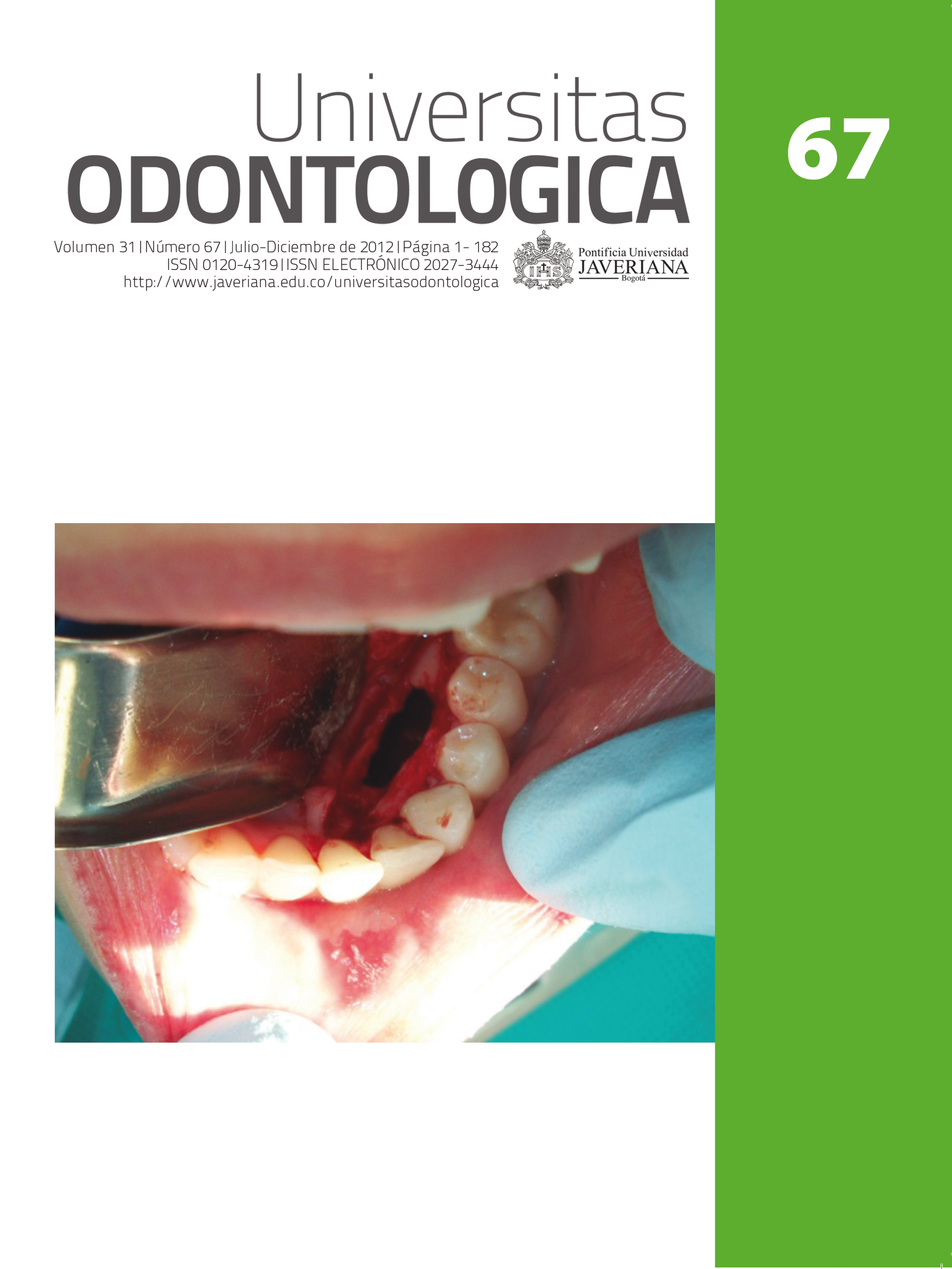Abstract
Antecedentes: Los trastornos de la articulación temporomandibular (DTM) abarcan ungran número de condiciones clínicas que involucran los músculos de la masticación, laoclusión, la articulación temporomandibular (ATM) y otras estructuras relacionadas, lo queresulta en dolor y disfunción mandibular. Muchos casos de DTM pueden ser manejadoscon tratamiento no quirúrgico; sin embargo, pacientes con daño irreversible de la ATM y enun estadio final de la patología articular necesitan reparación o reconstrucción quirúrgica,procedimiento realizado tradicionalmente con tejidos autógenos, principalmente injertocostocondral. El uso de tejidos autógenos para la reconstrucción de la ATM tiene mayoresdesventajas y un alta tasa de complicaciones. Estas desventajas incluyen morbilidad delsitio donante y largo tiempo quirúrgico. Las complicaciones comprenden reabsorción delinjerto y anquilosis. Las indicaciones para la reconstrucción total de la ATM con prótesisaloplásticas incluyen anquilosis, fractura condilar irreparable, necrosis avascular, reconstruccionesprevias fallidas, condiciones inflamatorias y degenerativas, reabsorción condilaridiopática y ciertos trastornos congénitos. Objetivo: Proporcionar al lector una técnicailustrada para la reconstrucción aloplástica de la ATM, estableciendo criterios mínimosindispensables para su reconstrucción en situaciones clínicas específicas. Métodos: Guíade práctica clínica basada en la evidencia científica, con una propuesta de protocolo parala planificación preoperatoria, el manejo quirúrgico y los cuidados postoperatorios en lareconstrucción aloplástica de la ATM con prótesis estándar. Conclusión: Los implantesprotésicos estándar para la reconstrucción aloplástica de la ATM proporcionan un métodoeficaz, seguro, predecible, eficiente y rentable para la reconstrucción en pacientes conpatología articular avanzada.
Background: Temporomandibular Joint Disorder (TMD) is a collective term embracing anumber of clinical conditions that involve the masticatory musculature, occlusion, thetemporomandibular joint (TMJ) and other associated structures, resulting in pain andlimitation of mandibular function. Many patients suffering from TMDs can be managedwith non-surgical therapies, but some end-stage TMJ patients require surgical TMJ repairor reconstruction. The most widely used autogenous graft for TMJ reconstruction is thecostochondral graft. The use of autogenous tissue for TMJ reconstruction presents severaldisadvantages and a high rate of complications. These disadvantages include donormorbidity and increased intraoperative surgical time. The complications include graft resorptionand ankylosis. Indications for TMJ total reconstruction with alloplastic prosthesisinclude ankylosis, condylar fracture irreparable, avascular necrosis, failed previous jointreconstruction, inflammatory and degenerative conditions, idiopathic condylar resorptionand certain congenital deformities. Purpose: To provide the practitioner with an illustratedtechnique for alloplastic reconstruction of the TMJ, establishing minimum criteria necessaryfor reconstruction in specific clinical situations. Methods: Evidence-based clinical practiceguidelines, with a proposed protocol for perioperative management, surgical management,and postoperative care in alloplastic reconstruction of the TMJ with prosthesis stock.Conclusion: Stock prosthetic TMJ implants provide a safe, predictable, efficient, and costeffective means for joint reconstruction in patients with advanced joint disease.
This journal is registered under a Creative Commons Attribution 4.0 International Public License. Thus, this work may be reproduced, distributed, and publicly shared in digital format, as long as the names of the authors and Pontificia Universidad Javeriana are acknowledged. Others are allowed to quote, adapt, transform, auto-archive, republish, and create based on this material, for any purpose (even commercial ones), provided the authorship is duly acknowledged, a link to the original work is provided, and it is specified if changes have been made. Pontificia Universidad Javeriana does not hold the rights of published works and the authors are solely responsible for the contents of their works; they keep the moral, intellectual, privacy, and publicity rights.
Approving the intervention of the work (review, copy-editing, translation, layout) and the following outreach, are granted through an use license and not through an assignment of rights. This means the journal and Pontificia Universidad Javeriana cannot be held responsible for any ethical malpractice by the authors. As a consequence of the protection granted by the use license, the journal is not required to publish recantations or modify information already published, unless the errata stems from the editorial management process. Publishing contents in this journal does not generate royalties for contributors.


